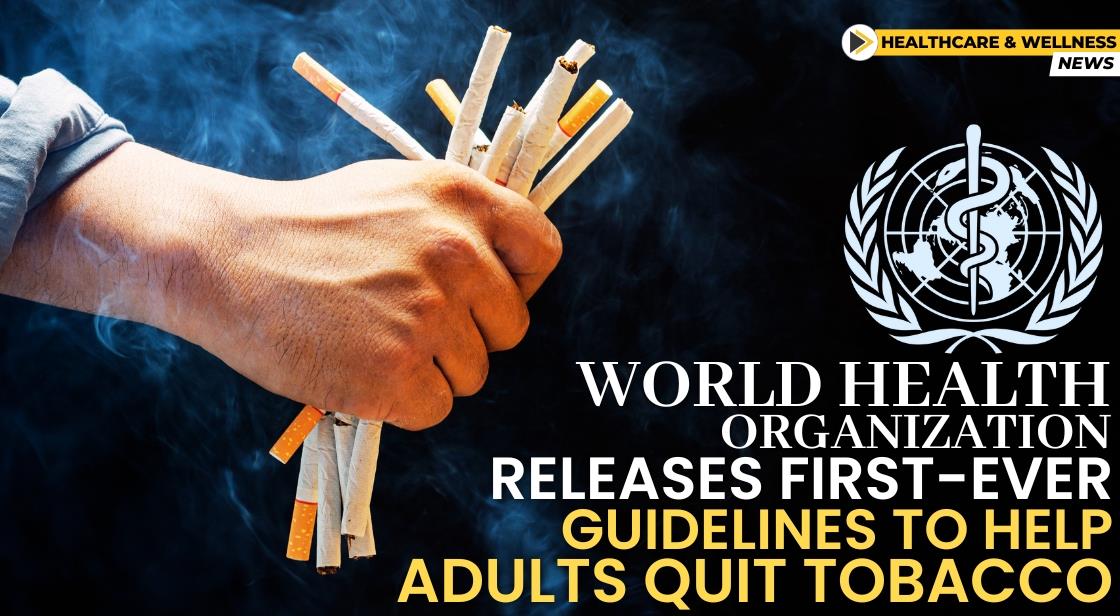World Health Organization Releases First-Ever Guidelines to Help Adults Quit Tobacco

News Synopsis
In a landmark move, the World Health Organization (WHO) has released its first-ever treatment guidelines designed to help adults quit tobacco use in all its forms. This comprehensive guide comes at a critical time, as millions struggle with tobacco addiction and lack access to effective cessation resources.
Overcoming the Tobacco Habit: A Global Challenge
Smoking and other forms of tobacco use remain a significant public health concern worldwide. WHO data reveals that over 1.25 billion people use tobacco globally, with more than 750 million yearning to quit. Unfortunately, 70% of these individuals lack access to effective cessation services, hindering their ability to break free from this addiction.
Dr. Rüdiger Krech, Director of Health Promotion at WHO, acknowledges the immense struggle of quitting tobacco: "We need to deeply appreciate the strength it takes and the suffering endured by individuals and their loved ones to overcome this addiction." He emphasizes the importance of these guidelines, stating, "These guidelines are designed to help communities and governments provide the best possible support and assistance for those on this challenging journey."
WHO's Guidelines: A Multifaceted Approach to Tobacco Cessation
The newly released guidelines offer a comprehensive approach to quitting tobacco, covering various cessation methods for adults seeking to give up tobacco products like cigarettes, waterpipes, smokeless tobacco, cigars, and even heated tobacco products (HTPs).
Key Recommendations by WHO:
-
Pharmacological Interventions: The guidelines highlight the effectiveness of specific medications like varenicline, Nicotine Replacement Therapy (NRT), bupropion, and cytisine to aid tobacco cessation.
-
Behavioral Support: The guidelines recommend incorporating behavioral interventions into healthcare settings. This includes brief health worker counselling (lasting 30 seconds to 3 minutes) to initiate the conversation about quitting and encourage further support.
-
Enhanced Behavioral Support: For individuals seeking more intensive help, the guidelines recommend options like individual, group, or phone counselling. These sessions can provide more personalized guidance and motivation throughout the quitting process.
-
Digital Tools: In today's digital age, the WHO acknowledges the potential of using digital interventions as supplementary tools. Text messaging programs, smartphone apps, and internet-based programs can offer additional support and self-management resources.
Conclusion
The release of the WHO's first-ever tobacco cessation guidelines marks a significant step towards empowering millions who struggle with tobacco addiction. Here's a quick recap:
-
Millions Seek Freedom From Tobacco: Over 750 million people worldwide desire to quit tobacco, highlighting the widespread need for cessation resources.
-
Lack of Access to Support: Despite the desire to quit, 70% of tobacco users lack access to effective cessation services, making quitting a daunting task.
-
WHO's Comprehensive Approach: The guidelines offer a multifaceted approach, including medications, behavioral support, and digital tools, catering to various needs and preferences.
This initiative by the WHO empowers governments and communities to provide better support systems for those on their quit journey. By providing a variety of tools and resources, these guidelines can significantly increase the success rate of tobacco cessation efforts globally. Quitting tobacco is not easy, but with the right support, individuals can overcome addiction and lead healthier lives.
You May Like









